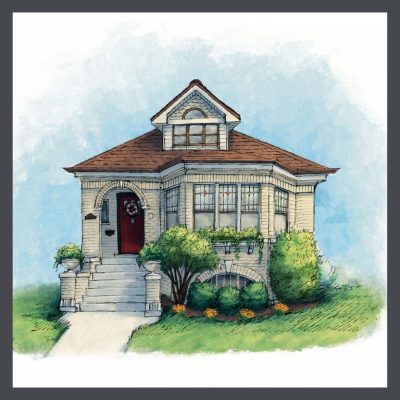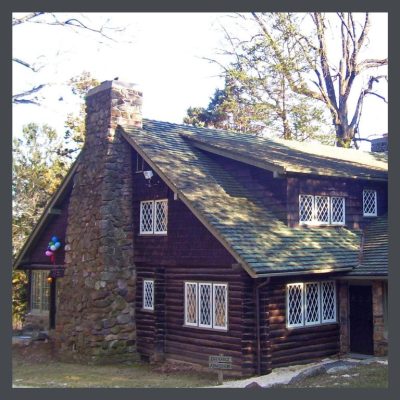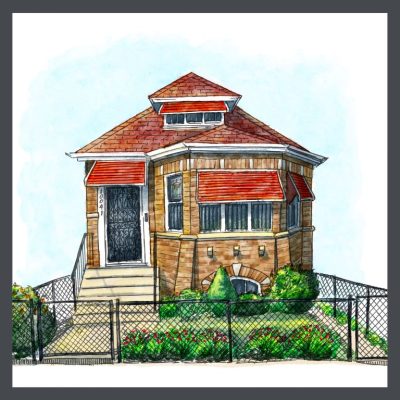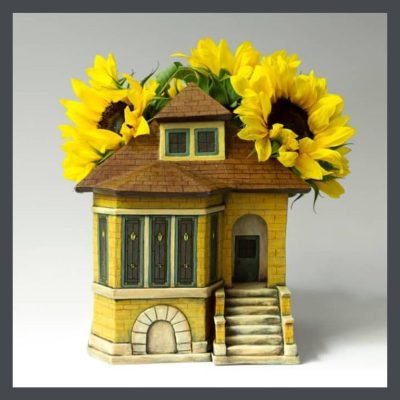 The story of the Chicago bungalow isn’t about the houses, it’s about the humanity. I call it, “Grits & girdles history.”
The story of the Chicago bungalow isn’t about the houses, it’s about the humanity. I call it, “Grits & girdles history.”
Because our houses tell the stories of the lives of the people who built them & how they lived, worked & formed their communities- the intimate details if you will. (In fact, I produced a historic documentary film about a bungalow neighborhood in Tampa that was full of the juicy goings- on of the time.)
The Chicago bungalow may be the most striking example of regional uniqueness to be found in the United States, in terms of single-family housing. There is no mistaking a Chicago bungalow which has many character defining features that are simply not seen in other areas of the country because they do not provide the same history or environment.
These features were developed out of the events that happened in the city, the natural resources & challenges, the man-made materials & technology that were available in the area during the period of their planning & construction.
THE STORY
 There were a great many influences that resulted in the Chicago bungalow, the first of course, being the Arts & Crafts Movement in England, a pushback against the overproduction of shoddy goods that characterized the Industrial Revolution.
There were a great many influences that resulted in the Chicago bungalow, the first of course, being the Arts & Crafts Movement in England, a pushback against the overproduction of shoddy goods that characterized the Industrial Revolution.
The philosophy & design of the Movement were imported to the U.S. by Gustav Stickley, a furniture designer, writer & innovator. The Chicago bungalow veers wildly from Stickley’s ideal of a log cabin in the woods as they are built of brick & sit on a 125’-by-25’ lot in a city, which by 1910 was the home to over 2 million souls, the second largest in the United States, after New York. Not the low, wide structures of the American West on their expansive lawns, nor Stickley’s rock chimneyed log house in the woods, but bungalows they were-tidy compact brick muffins sitting prettily on the narrow city lots.
The Chicago bungalow provided exactly the modest refuge that was needed by the working class at the time, many of them immigrants, who had come to work in the factories & meat packing plants. Nearly 80,000 homes were built, each one with its own subtly distinctive charm & character.
 The next great influence was the Chicago Fire of 1871, which started in a barn & burned for over a day, killing 300 people. Because of the pressure to build houses to accommodate the growing population, buildings had been constructed using quickly assembled, cheaply constructed balloon-framing, with studs running from the foundation to the roof. Fire travels upward & there was nothing to stop it as it roared up the walls & turned the houses to ash, making a third of the city homeless. After this disaster, the city enacted new building codes & rapidly rebuilt the city according to those codes. With brick.
The next great influence was the Chicago Fire of 1871, which started in a barn & burned for over a day, killing 300 people. Because of the pressure to build houses to accommodate the growing population, buildings had been constructed using quickly assembled, cheaply constructed balloon-framing, with studs running from the foundation to the roof. Fire travels upward & there was nothing to stop it as it roared up the walls & turned the houses to ash, making a third of the city homeless. After this disaster, the city enacted new building codes & rapidly rebuilt the city according to those codes. With brick.
When you think of a Chicago bungalow, brick does come instantly to mind. The area was gifted with an abundance of clay by the glaciers that moved through the area over 10,000 years ago leaving their assorted debris so the resultant, fired bricks are speckled in a variety of colors. To satisfy the demands of the building boom in 1910, nearly a billion of these cheap bricks were produced. When I say cheap I mean cheap, averaging $7 per thousand while the better, more homogenous brick sold for as high as $35 per thousand.
So, builders took advantage of this cheap brick & used it to build areas that were not so visible, like foundations, structural walls, chimney flues & the back & sides of the house. Because Chicago is centrally located & a railroad hub, it was easy to bring all types of brick from all over the country so the front facades of bungalows show a charming diversity of brick types.
THE CHICAGO BUNGALOW STORY-ILLUSTRATED
 The images that you see here are created by Wonder City Studio by Phil Thompson & his wife Katie who are obviously in love with their town. He has created many drawings of Chicago buildings of all types, including capturing the sweet, sturdy hominess of the bungalow.
The images that you see here are created by Wonder City Studio by Phil Thompson & his wife Katie who are obviously in love with their town. He has created many drawings of Chicago buildings of all types, including capturing the sweet, sturdy hominess of the bungalow.
He features prints of his representations of the city, but, he also does commissioned portraits of homes anywhere. When I lived in Eagle Rock we had plein air painters (an Eagle rock tradition, historically) lining the walking tour route, many painting the homes of the tour hosts. The paintings were then auctioned for charity at an exhibit later & the homeowners were always the highest bidders for the paintings of their own homes. A portrait captures the soul of a house much more eloquently than a photograph (well, than a photograph of a mere mortal. You have to allow for the work of Alex Vertikoff.)
But, wait, there’s more! Katie Lauffenburger, wife, mom & founding partner of Wonder City Studio, will sculpt a custom planter Mini-Me of your home. And you can put flowers in it!
Although we may dream of living in our homes forever, sometimes life necessitates change & having either a beautiful drawing or a tiny 3-D model of it could mend a broken heart.
THE CHICAGO BUNGALOW ASSOCIATION HAS THE FULL STORY
What I can tell you about Chicago bungalows is a tiny fraction of the knowledge that the Chicago Bungalow Association posses & teaches. I just wanted to whet your appetite for this architectural form, unique in all the world to the Windy City.
 STAY IN THE BUNGALOW KNOW!!!
STAY IN THE BUNGALOW KNOW!!!
Sign up for our newsletter & receive our FREE E-book, 7 VITAL Things to Do Before You Hire a Contractor.



0 Comments